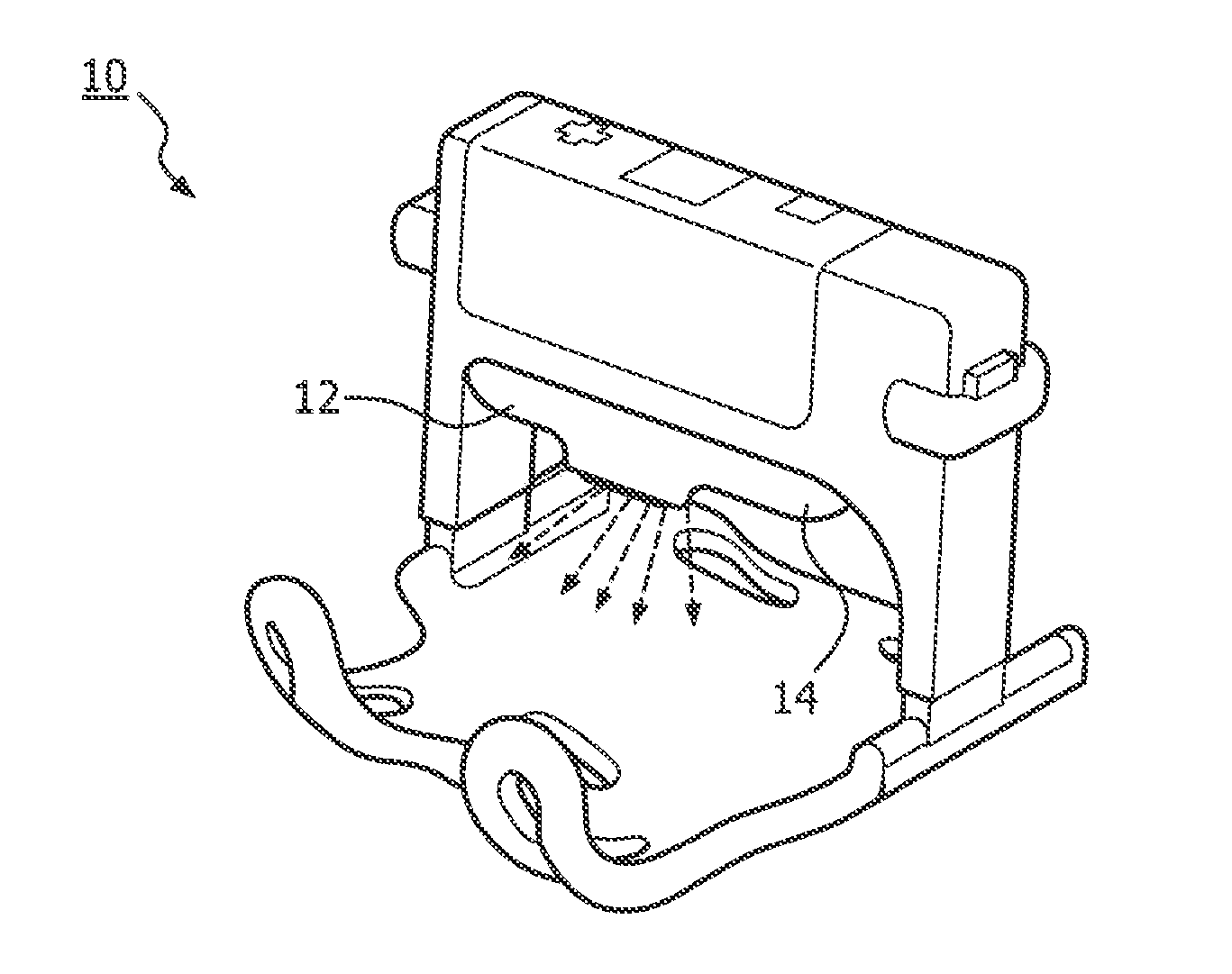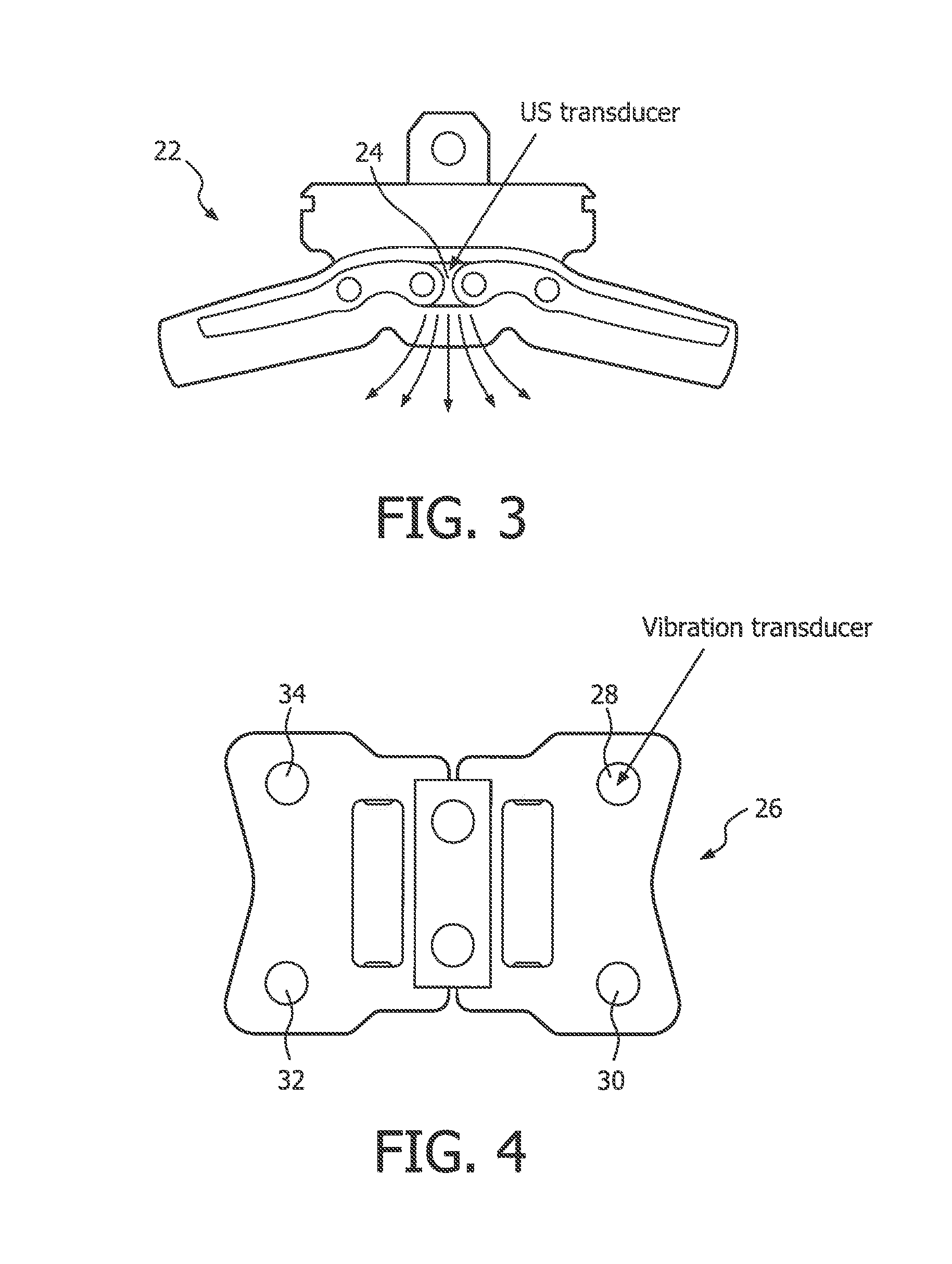Resuscitation device
a resuscitation device and a technology for cardiac arrest, applied in the direction of artificial respiration, heart stimulation, therapy, etc., can solve the problems of low perfusion rate, cell death, unavoidable death, etc., and achieve the effect of increasing the likelihood of surviving cardiac arrest and being convenient to us
- Summary
- Abstract
- Description
- Claims
- Application Information
AI Technical Summary
Benefits of technology
Problems solved by technology
Method used
Image
Examples
Embodiment Construction
[0039]FIG. 1 schematically illustrates an embodiment of an automated device 10 where a transducer 12 is integrated in a CPR pad 14. In this way the heart and large vessels in the thorax of a patient being treated with the device 10 will be exposed to sound and / or vibrations in a physiologic important frequency / power range. Also an acoustic coupling medium may be introduced in between the transducer 12 (for example Aquaflex Ultrasonic gel pad) and the patient. The gel-pad, not illustrated here, also functions as a flexible contact surface between the CPR pad 14 and the chest of the victim / patient. The transducer may either emit, which is presently preferred, in the frequency range below 10 MHz (e.g. at 24-27 kHz, around 300 Hz) or at other suitable frequency or frequency interval. The (ultra) sound transducer may advantageously be of a Piezo type. The emitted power may advantageously be below 1 W / cm2. As mentioned above the stimulation device may emit power such that tissue damage do...
PUM
 Login to view more
Login to view more Abstract
Description
Claims
Application Information
 Login to view more
Login to view more - R&D Engineer
- R&D Manager
- IP Professional
- Industry Leading Data Capabilities
- Powerful AI technology
- Patent DNA Extraction
Browse by: Latest US Patents, China's latest patents, Technical Efficacy Thesaurus, Application Domain, Technology Topic.
© 2024 PatSnap. All rights reserved.Legal|Privacy policy|Modern Slavery Act Transparency Statement|Sitemap



